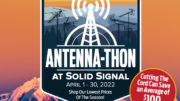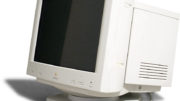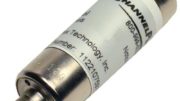OK, let’s be honest here: very few of us want to go up on the roof if we don’t have to. There’s a lot going on there. It’s creaky and weird and there could be bird poop up there, and if you live in the south, the roof is going to be scorching hot much of the year. It’s a pain, even if you manage not to step on a stray roof nail which honestly, there’s no guarantee of.
If it’s just a little off…
So maybe you’ve noticed that your antenna is a little bit off aim. Maybe it’s the way it was installed in the first place, or maybe after several years of heating and cooling, things have loosened up enough that the antenna moves in the wind. Maybe it’s just settled in a strange way, or maybe a bird hit it (Don’t laugh, I know someone this happened to.) But it’s not necessarily affecting your reception. What do you do?
There are two schools of thought. A lot of the engineers in the audience will tell you that you should always aim for peak efficiency. If something in your home theater isn’t as good as it could possibly be then it needs to be addressed. On the other hand, there’s the “if it ain’t broke” school which says that if you’re not experiencing any problems at all now, why introduce additional chaos into a functioning system? If you’re seeing perfect reception now, why chase numbers when they won’t make a difference to the experience?
Here’s where I stand
Personally I’m in the middle between those two extremes. I do like to know that everything is as good as it can be but I’m realistic too… it’s a lot of risk to think that something unexpected could happen. Especially lately, with all the other things we have to deal with today. Best case scenario the reception gets worse. Worst case, you fall off the roof. So I have to fall back on the science, and the two factors that could mean that re-aiming makes no difference or it makes a huge difference.
Beam width will save you…
The first thing you need to know about is beam width. Beam width, to put it simply, is a measure of how far off-aim your antenna can be and still pick up any signal at all. Many of our antennas have a beam width of 45 degrees or more, meaning that if they’re 5 degrees off a perfect aim, there’s no real reason to change them. Toward the edges of the beam width, the signal is going to get weaker, but it’s possible it will still be strong enough to not need reaiming.
…but obstructions could be a problem
On the other hand, we always talk about obstructions. An obstruction is anything that comes between you and the broadcast source. It could be a tree, a house, a telephone pole, anything. If you see obstructions between you and the broadcast tower, often times even the slightest movement from the antenna is going to cut the signal dramatically. What’s really weird is that if there is an obstruction directly between you and the tower, you’ll find the best results by aiming slightly off … on purpose … to miss the effect of it.
What about multipath
If you’re very close to the broadcast source or if there are large buildings or mountains nearby, you might suffer from multipath issues. Multipath is the term we use for when you pick up both the original signal and a second one that has bounced off a building or mountain. Back in the old days this was the source of ghosting, but today multipath just creates more of a glitchy picture. Sometimes aiming a little bit off axis will stop multipath issues because the “bounced” signal is not as strong as the direct one, and aiming off access may limit the antenna’s ability to pick up both signals, which is actually what you want.
If you do decide to go up there to look at the antenna…
Of course be extremely careful. Even in the best of times, a trip to the hospital is no joke. Today it’s even more important to keep yourself healthy. So, if there’s no real need to do it, don’t do it. On the other hand if you do go up there and find that you need more supplies or accessories, or even need a new antenna, you’ll find what you need when you shop the great selection at Solid Signal.





